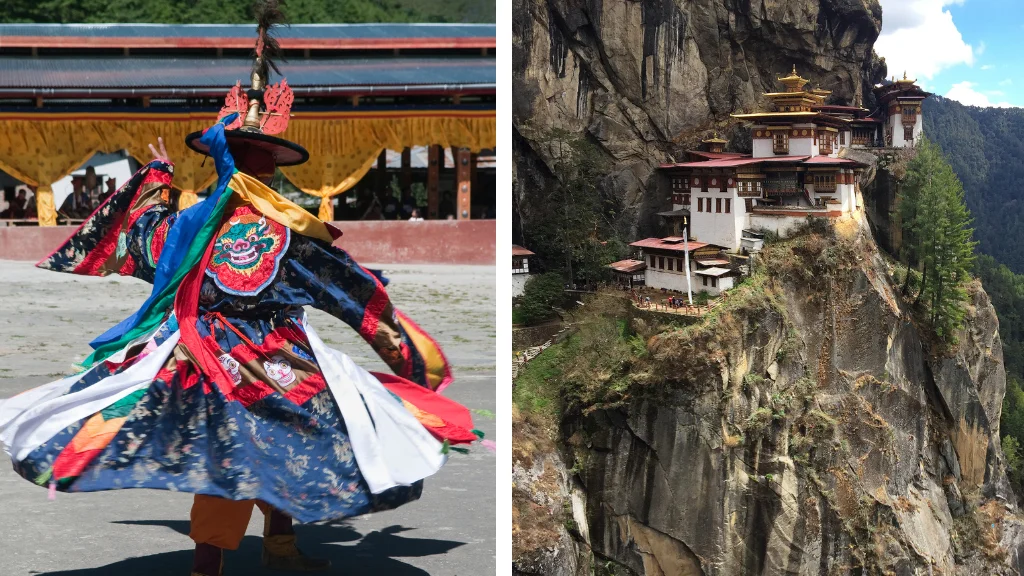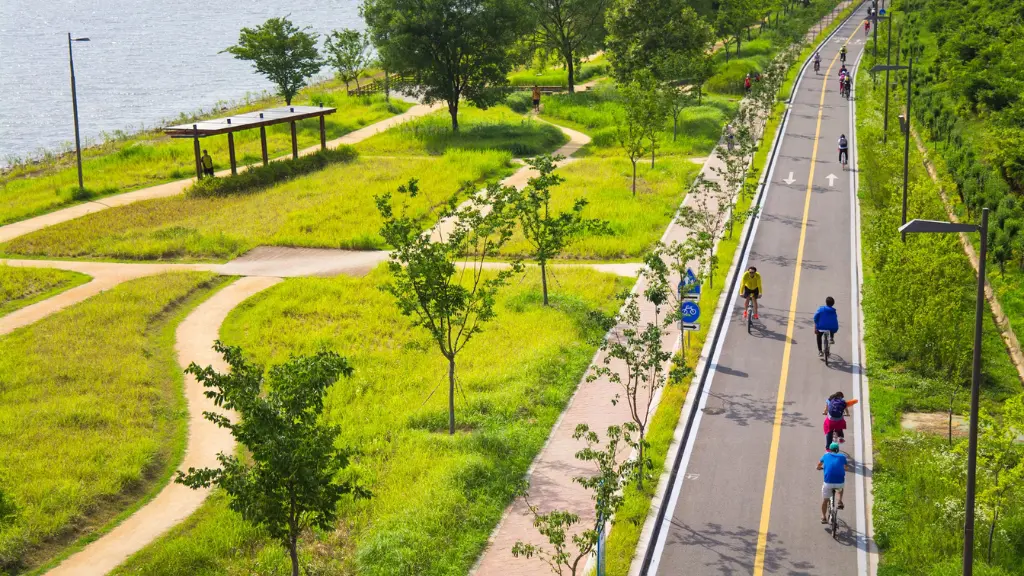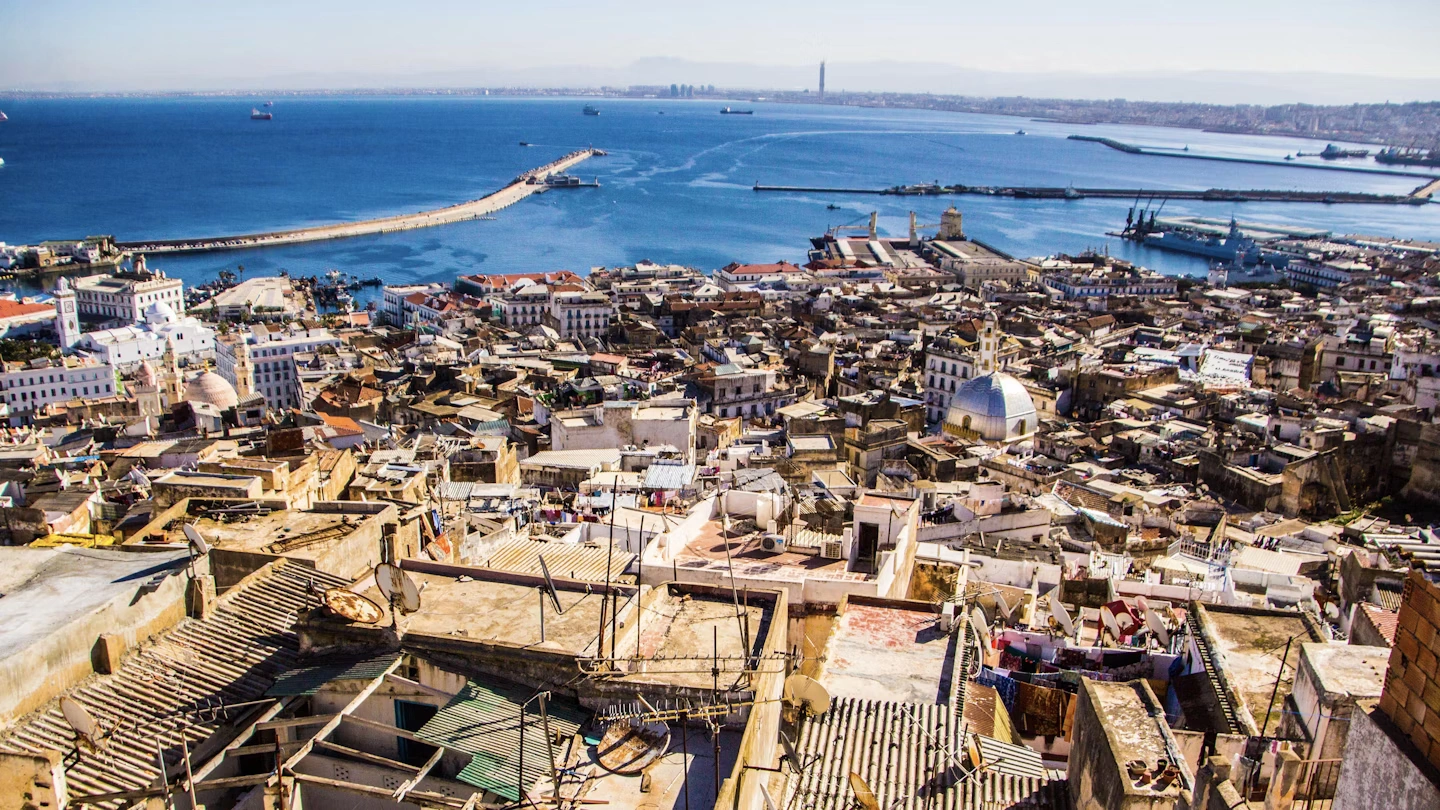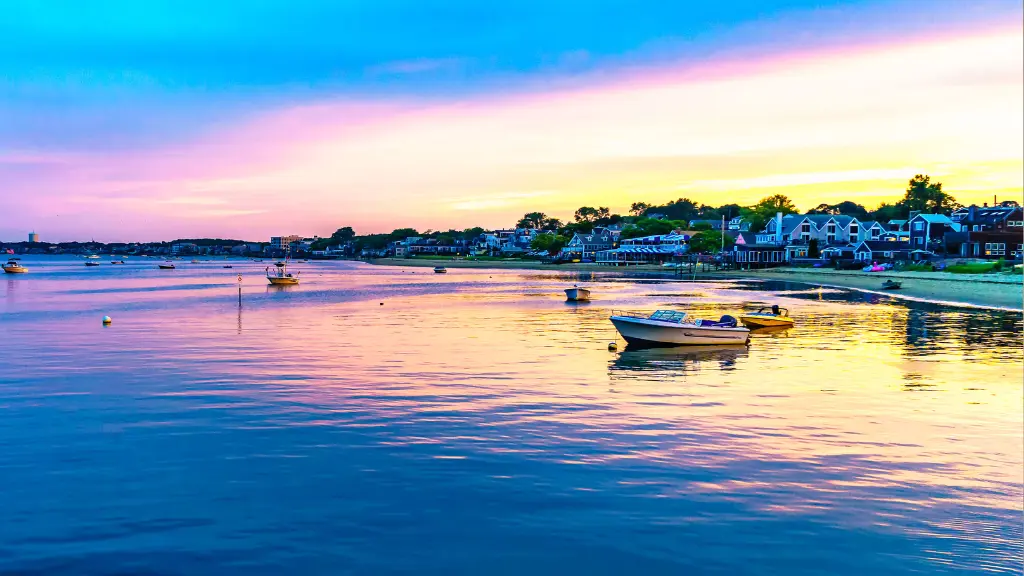Nestled between India and China, Bhutan is a land of mystery and magic, steeped in ancient Buddhist traditions and surrounded by the breathtaking Himalayan range. While its landscapes offer mesmerizing views, what truly captivates visitors are the rich cultural experiences embedded in the country’s festivals and temples.
Bhutan’s vibrant festivals (known as “Tsechu”) and its revered temples provide an intimate glimpse into the spiritual heart of this serene nation.
You May Also Like: Turkmenistan & the Gates of Hell: Exploring the Mysterious Crater and the Wonders of Central Asia
In this blog, we’ll explore the most significant festivals and temples of Bhutan that make it a must-visit destination for travelers seeking cultural immersion and spiritual awakening.
Tsechu: Bhutan’s Vibrant and Spiritual Festivals
Tsechu, meaning the “tenth day,” is a series of religious festivals celebrated across Bhutan, each occurring on the tenth day of a month of the lunar Tibetan calendar. These festivals are held in honor of Guru Rinpoche, the saint who brought Buddhism to Bhutan in the 8th century. Tsechus are not just religious events; they are vibrant expressions of Bhutanese culture and community spirit.
- Paro Tsechu: A Grand Celebration
One of Bhutan’s most famous and widely attended festivals is the Paro Tsechu, held in the Paro Valley. It draws both locals and tourists alike, showcasing elaborate dances and colorful masks that depict ancient myths and legends. The highlight of the festival is the unfurling of the “Thangka,” a giant sacred scroll depicting Guru Rinpoche, which happens on the final day.The Paro Tsechu provides a glimpse into Bhutan’s deep-rooted Buddhist beliefs, and the festival’s energetic dances, known as Cham dances, symbolize the triumph of good over evil. These masked dances, performed by monks, are believed to bless those who witness them, ensuring good fortune and spiritual cleansing. - Thimphu Tsechu: The Capital’s Spiritual Gathering
Held in the capital city of Thimphu, the Thimphu Tsechu is another major festival that lasts for three days, usually in September or October. This festival is renowned for its vibrant energy, large crowds, and stunning traditional costumes. Locals wear their finest clothes, and the streets of Thimphu come alive with music, dances, and religious ceremonies.A unique feature of the Thimphu Tsechu is the famous “Atsaras,” or festival jesters, who entertain the crowds with jokes and tricks, adding a playful atmosphere to the spiritual event. The festival is an important time for Bhutanese people to come together in devotion and celebration. - Jambay Lhakhang Drup: Celebrating the Past
Located in Bumthang, Jambay Lhakhang is one of Bhutan’s oldest temples, and the Jambay Lhakhang Drup festival celebrates its historical significance. The temple, believed to have been built in the 7th century by Tibetan King Songtsen Gampo, plays a central role in this annual event. The festival is famous for its sacred fire dances, known as “Mewang,” and the midnight naked dance called “Tercham.” These rituals are deeply spiritual, meant to purify sins and ensure good harvests.
Sacred Temples of Bhutan: Places of Serenity and Spirituality
Bhutan’s temples, or “Lhakhangs,” are not only places of worship but also architectural masterpieces perched on cliffs, nestled in valleys, or hidden within remote mountains. They hold immense spiritual significance and provide insight into Bhutan’s rich Buddhist heritage.
- Tiger’s Nest Monastery (Paro Taktsang)
Undoubtedly, the most iconic temple in Bhutan is the Tiger’s Nest Monastery, also known as Paro Taktsang. Perched precariously on the side of a cliff 10,000 feet above sea level, this stunning monastery is believed to be the meditation site of Guru Rinpoche, who flew to the site on the back of a tigress. The hike to Tiger’s Nest is a pilgrimage in itself, with spectacular views of the Paro Valley along the way.Visiting Tiger’s Nest requires effort, but it’s a deeply rewarding experience. The atmosphere of tranquility and the breathtaking beauty of the monastery against the backdrop of the Himalayas make it a must-see for any traveler to Bhutan. - Punakha Dzong: The Palace of Great Happiness
The Punakha Dzong is one of Bhutan’s most beautiful and significant fortresses. Situated at the confluence of the Mo Chhu (Mother River) and Pho Chhu (Father River), this dzong is often referred to as “The Palace of Great Happiness.” It served as the administrative center and religious heart of Bhutan until Thimphu became the capital.Punakha Dzong is particularly famous for its intricate woodwork, towering white walls, and peaceful surroundings. Every spring, the dzong hosts the Punakha Tsechu, which reenacts scenes from Bhutanese history, making it a vibrant cultural and historical event. - Kyichu Lhakhang: The Oldest Temple in Bhutan
Located near Paro, Kyichu Lhakhang is considered the oldest and most revered temple in Bhutan, built in the 7th century. According to legend, this temple was one of 108 built by the Tibetan King Songtsen Gampo to subdue a demoness who was preventing the spread of Buddhism. The temple’s ancient statues, prayer wheels, and serene gardens offer a peaceful retreat for reflection and prayer.Kyichu Lhakhang holds great spiritual importance, and many Bhutanese visit it to make offerings, pray, and spin the temple’s prayer wheels, believing it brings good luck and blessings.
The Spiritual Significance of Bhutan’s Festivals and Temples
In Bhutan, festivals and temples are not just cultural landmarks; they are living embodiments of the country’s deep spirituality. The Bhutanese people’s devotion to their Buddhist faith is evident in every aspect of life, from their everyday rituals to the grand celebrations of Tsechu. For travelers, experiencing these festivals and visiting these temples offer a unique opportunity to connect with Bhutan’s peaceful and deeply spiritual way of life.
The combination of vibrant festivals, serene temples, and breathtaking landscapes creates a magical experience that lingers in the hearts of those who visit. Whether you’re hiking to the Tiger’s Nest Monastery, witnessing the sacred dances of Tsechu, or meditating in a centuries-old temple, Bhutan offers a journey that transcends the ordinary and invites you into the spiritual soul of the Himalayas.
Conclusion: Bhutan’s Cultural and Spiritual Legacy
Bhutan’s festivals and temples form the foundation of its rich cultural and spiritual legacy. As a nation that measures its success through Gross National Happiness, rather than economic growth, Bhutan offers visitors a rare opportunity to witness a country where spirituality and tradition are the cornerstones of life.
Whether you’re drawn to the energetic dances of Tsechu or the quiet contemplation found in Bhutan’s temples, you’ll leave Bhutan with a profound sense of peace and connection to its people, their beliefs, and the majestic beauty of the Himalayan kingdom.
Embark on a journey to Bhutan and discover the festivals and temples that make it the spiritual heart of the Himalayas. Let Bhutan’s timeless traditions inspire your soul and enrich your travel experiences.










